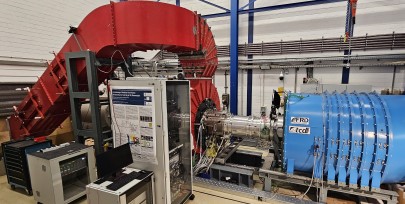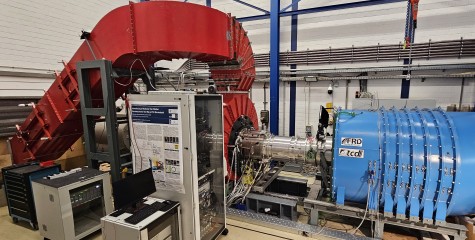Modern fans have long, slender blades that are particularly susceptible to aeroelastic interactions with the airflow and the associated vibrations. The latter harbour high risks for flight safety, cause immense costs and hinder the further increase in efficiency of an engine.
Our research contributes to the measurement and understanding of the underlying physical phenomena. The GLR combines many years of experience in the field of aeroelasticity with modern measurement technology and the latest analysis methods, which are incorporated into current projects. Since 2025, the department will operate a highly flexible test rig for measuring modern fan stages of different engine types, the ‘FRD’ (Fan Rig Darmstadt). The high modularity of the test rig makes it possible to exchange the test rotor or even entire configurations in the shortest possible time and carry out back-to-back comparative measurements. At the same time, additional numerical calculations are carried out on the Hessian high-performance computer.
The close integration of experiment and numerics enables the comparison of different design variants and thus the validation and further development of design parameters for modern fan blades. The physical understanding gained of the interaction between structure and aerodynamics (aeroelasticity) will enable lighter and more efficient engines in the future.







